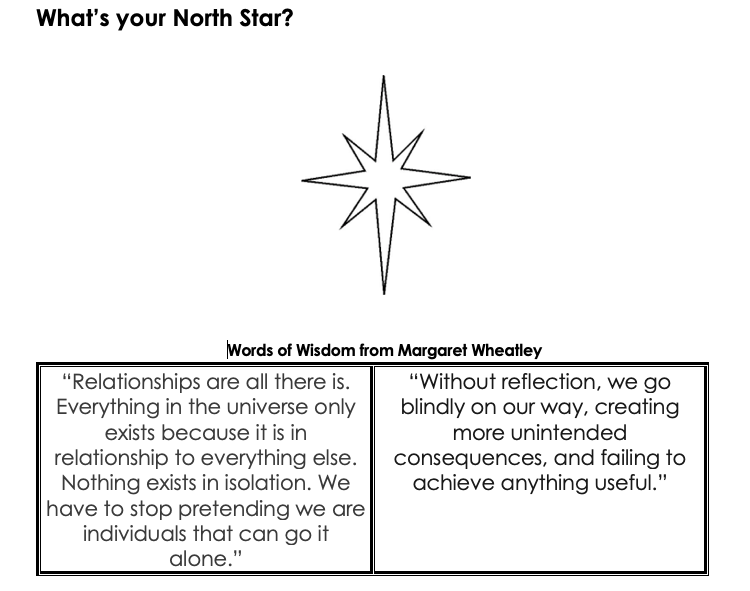Co-Planning: Reading & Writing Mini-Unit Focused on Expert Studies [PART 4]
Written by Julie Wright & Barry Hoonan
HOW WE GOT INTO PROFESSIONAL CAHOOTS WITH ONE ANOTHER
We’ve had the pleasure of knowing and working with one another for the past seven years. We met at a school in Harlem, Julie as an Instructional Coach and Barry as a Model Classroom Teacher and Instructional Coach. Our work continued well past that experience. With Barry out west and Julie on the east coast, we’ve spent the majority of our years working across 3000 miles. Highlights include Sunday morning co-planning sessions and co-authoring What Are You Grouping For?, Grades 3-8: How to Guide Small Groups Based on Readers -- Not the Book. We’ve always enjoyed being THINKING PARTNERS and we believe educators need someone to think beside now, more than ever.
A DISCLAIMER OF SORTS
As we navigate and co-plan learning during the weeks ahead, here are a few shared agreements:
We are not going to edit these videos which means it might be clunky at times. You might get a barking dog, tech glitches, or family interruptions. We know you’ll be able to relate and hope you’ll be understanding.
The ideas we share are NOT “the way” or “the right way” -- they are just one way to approach things. And, we are figuring it out as we go along too. We hope you’ll take the big ideas we are discussing and — adopt, adapt or improve upon them — making them fit your settings, interests and needs.
We suggest focusing on process -- our work will continue to unfold between video segments. That’s why if you pop back into our shared document links, you’ll notice changes because we’ll be adding ideas. That’s because responsive plans evolve across the days and weeks.
HERE’S WHAT WE ARE UP TO
Kids have been learning from home for several weeks now. Barry and Julie have a co-planning routine and they “meet” about 1-2 times each week. Sometimes we switch on the video, other times we don’t.
Barry’s students have settled into a learning from home routine, sort of. Each week brings about new celebrations and new challenges.
Kiddos are knee-deep in an Expert Studies mini-unit. They are taking a 3-day pause from the unit to experience “camp”. During this time, they would typically spend 3 days out in the woods to experience outdoor exploration and learning as a community. Due to the pandemic, camp will take a different form this year.
THINGS WE ARE THINKING ABOUT NOW
How can kiddos use their “camp” experience to fuel the end of the Expert Studies mini-unit?
What if kiddos do a 2 minute presentation to a small group focused on their expert study and use that as a dress rehearsal for the end demonstration? If we used this as a mid-process reflection, maybe they could figure out what they need next.
VIDEO
If you are interested in watching a coach and teacher co-plan — working as THINKING PARTNERS in response to the unique times we are currently experiencing — check out this video.
OTHER LINKS & RESOURCES
Our DRAFTY, dynamic, in-motion, evolving plans: Co-Planning: Julie & Barry
Planning Templates: Co-planning Templates
Small Group Plans: Small Group Reading & Writing Lesson Plans to Adopt, Adapt or Improve [During Remote/Distance Learning]
Interested in post-it note planning, check out one of these resources: Chapter 8 & 9 Resources from What Are You Grouping For?, Grades 3-8: How to Guide Small Groups Based on Readers -- Not the Book.
BARRY’S REFLECTIONS
We’ve got small groups meeting. Do we need to switch them up or would it be beneficial to keep them the same?
How, when, where can I use some co-created texts from last year [Barbie study] to inspire the work in this mini-study?
I need to collect artifacts from last year’s students and use them as models for anyone who needs them.
JULIE’S REFLECTIONS
How can we use the ideas in this Expert Study mini-unit to ignite summer reading, writing, and talking about things that you find interesting?
What will kiddos do this summer in lieu of some typical summer activities? Are there new ways to host “meet ups” or “check ins” for kiddos who want and/or need it?
WANT TO SUBMIT A QUESTION or CONNECT WITH US?
If something we’ve shared inspires new ideas or ignites some questions, reach out to us using THIS FORM and we’ll do our best to get back to you!
















